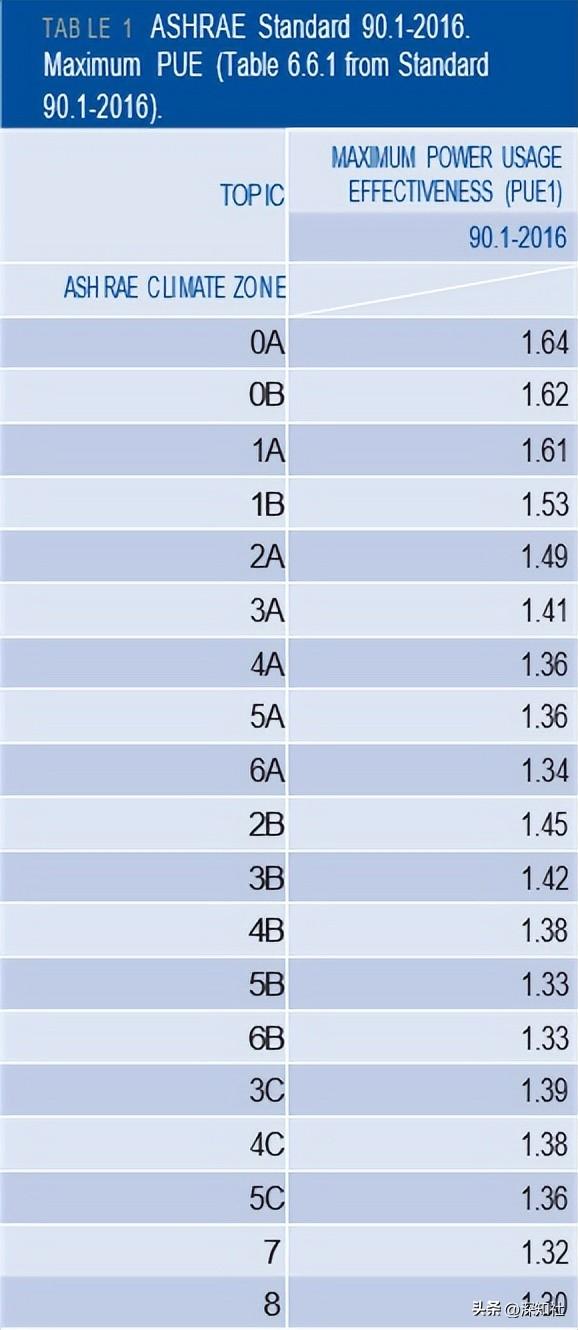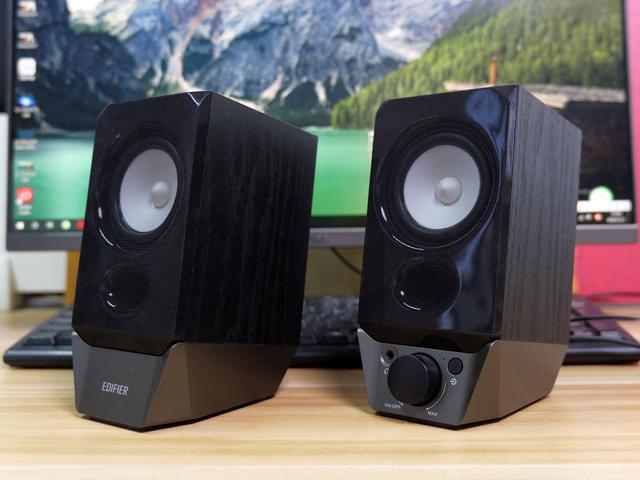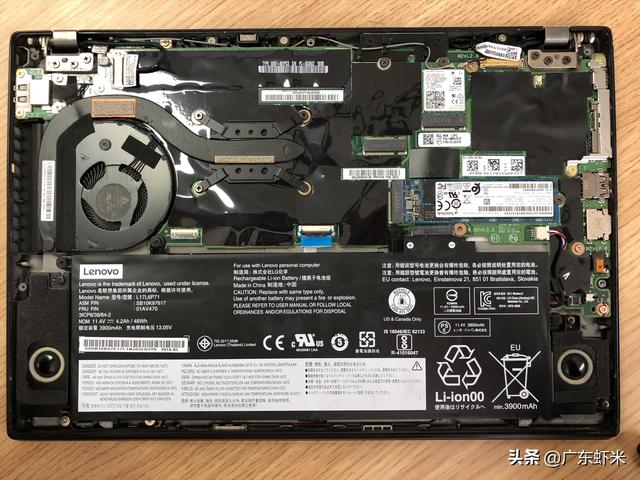国家能效目录(标准解读数据中心能效标准深度解析)

规范速读┃ASHRAE 90.1,90.4:数据中心能效标准
Standards 90.1 and 90.4 Meeting Data Center Energy Compliance
BY DAVID QUIRK, P.E., MEMBER ASHRAE
译 者 说
ASHRAE 2016年针对数据中心这一特殊的商业建筑,推出了90.4标准和90.1标准为这类建筑的能效设计提供了方法和指标,本文对这两个标准进行了解读。
由于特定的能源标准专门用于这种建筑分类,数据中心在商业建筑中显得尤为特别。根据工业标准行业要求,ASHRAE于2016年制定并发布了ANSI \/ASHRAE标准90.4,即数据中心能源标准,以创建新的方法和指标,证明数据中心系统设计符合能效要求。本专栏探讨了与标准90.4和标准90.1相关的一些合规复杂性。
Data centers are unique among commercial buildings because a specific energy standard is dedicated to this classification of building. In response to industry requests, ASHRAE developed and published ANSI/ASHRAE Standard 90.4, Energy Standardfor Data Centers, in 2016 to create new methods and metrics for demonstrating energy efficiency compliance for data center system designs. This column examines some of the compliance complexities associated with Standard 90.4 and Standard 90.1.
2016年之前,ANSI \/ASHRAE \/IES标准90.1《建筑能源标准(低层住宅建筑除外)》是自2010年版中包含数据中心以来证明符合性的唯一手段。(有关符合2010版ASHRAE标准90.1的详细信息,请参阅参考1。)标准90.1-2010使用了电源使用效率(PUE)指标来证明合规性;然而,在数据中心投入运营之前,该指标是作为一种可操作的测量方法而非设计方法开发的。自2019年版标准90.1起,及标准90.4被直接引用为替代合规途径,允许这两个标准被准则(国际规范委员会[ICC])采用,并在国际节能规范(IECC)中引用.
Prior to 2016, ANSI/ASHRAE/IES Standard 90.1, Energy StandardforBuildings ExceptLow-Rise Residential Buildings,was the only means of demonstrating compliance since inclusion of data centers in the 2010 edition. (For details on compliance to the 2010 edition ofASHRAE Standard 90.1, refer to Reference 1.) Standard 90.1-2010 used the power utilization effectiveness (PUE) metric to demon strate compliance; however, that metric was developed as an operational method of measurement, not design, prior to the data center’s being operational. As of the 2019 edition of Standard 90.1, Standard 90.4 is directly referenced as an alternative compliance path, allowing both standards to be adopted by code (International Code Council [ICC]) and referenced within the International Energy Conservation Code (IECC).
由于大多数美国司法管辖区仍在使用2016年(或更早)版本的标准,因此在此讨论和比较2016年和2019年版本。
Because the 2016 (or earlier) versions of the standards are still in use in most U.S. jurisdictions, both the 2016 and 2019 versions are discussed and compared here.2
符合标准90.1的路径
Compliance Paths with Standard 90.1
标准90.1-2016列出了几种合规途径。根据第6.2.1段“合规性”,所有项目必须符合第6.2节“概述”;6.7,提交文件;6.8,最低设备效率表;以及以下其中一项:
Standard 90.1-2016 lists several compliance paths. Per paragraph 6.2.1, Compliance, all projects must show compliance with Sections 6.2, General; 6.7, Submittals; 6.8, Minimum Equipment Efficiency Tables; and one of the following:
- 第6.3节,HVAC系统的优化选项
- Section 6.3, Simplified Approach Option of HVAC Systems;
- 第6.4节,强制性规定和第6.5节,规范性路径
- Section 6.4, Mandatory Provisions and 6.5, Pre- scriptive Paths;
- 第6.4节,强制性规定和第6.6节,备用合规路径
- Section 6.4, Mandatory Provisions and 6.6, Alterna- tive Compliance Path.
在上述选项中,第6.5节,规范性路径,第6.5.1节节约者,是一种规范性路径,它给许多设计师带来了新的挑战,并经常被避免以最大限度地减少从节约者经验的操作风险。在各种会议和特定于数据中心的论坛上,数据中心行业的专家已经讨论了这个话题。在计算机机房的标准中存在一些例外(参见6.5.1,#11和#12)
Among the above options, Section 6.5, Prescriptive Path, Paragraph 6.5.1 Economizers, is a prescriptive path that has introduced new challenges to many designers and has often been avoided to minimize operational risk experienced from economizers.3 This topic has been discussed by experts in the data center industry at various conferences and data center-specific forums. Certain exceptions exist within the standard for Computer rooms (see paragraph 6.5.1, #11 and #12).
第6.6节,备用合规路径,第6.6.1节计算机房系统,指出服务于计算机房加热、冷却或通风需求的暖通空调系统应符合第6.1、6.4、6.6.1.1或6.6.1.2、6.7和6.8节。
Section 6.6, Alternate Compliance Path, paragraph 6.6.1 Computer Room Systems, indicates that HVAC systems serving the heating, cooling or ventilating needs of a computer room shall comply with Sections 6.1, 6.4, 6.6.1.1 or 6.6.1.2, 6.7 and 6.8.
章节6.6.1.1规定PUE1(标准中定义的能耗指标)应小于或等于表6.6.1中列出的值。
Section 6.6.1.1 states that the PUE1 (an energy consumption metric defined in the standard) shall be less than or equal to the values listed in Table 6.6.1.
反过来,章节6.6.1.2规定,在设计IT设备负载的100%和50%时,PUE0(标准中定义的能源需求指标)应小于或等于表6.6.1中列出的值。
In turn, Section 6.6.1.2 states that the PUE0 (an energy demand metric defined in the standard) shall be less than or equal to the values listed in Table 6.6.1, at both 100% and 50% of the design IT equipment load.
参考标准90.1-2016,如表1所示。PUE1的定义出现在标准中
For reference, Standard 90.1-2016 Table 6.6.1 is listed here as Table 1. A definition for PUE1 appears in the standard.
标准90.1-2019
Standard 90.1-2019
对于标准90.1-2019,表6.6.1已被取消,而章节6.6“备用合规路径”中的合规路径只是对标准90.4.4的引用
For Standard 90.1-2019, Table 6.6.1 has been eliminated, and the compliance path under Section 6.6, Alternative Compliance Path, is sim- ply a reference to Standard 90.4.4
标准 90.4-2016
Standard 90.4-2016
标准90.4-2016的机械系统遵从性路径包括实现一个被称为机械负载组件(MLC)的计算实体的设计和能源目标。设计MLC,需要满足100%和50%的信息技术设备(ITE)负载(每个表6.2.1.1),也必须满足100%和50%的信息技术设备负载(每个表6.2.1.2)。此外,电力基础设施的损耗也存在限制,这是由损耗组件(ELC)设计的指标定义的。该标准第11节允许在MLC和ELC之间进行权衡,以实现对标准的全面遵守。
The mechanical system compliance path for Standard 90.4-2016 consisted of achieving both design and energy targets for a calculated entity called the mechanical load component (MLC). There was both a design MLC, which needed to be satisfied at 100% and 50% of infor- mation technology equipment (ITE) load (per Table 6.2.1.1) and an annualized MLC, which also had to be met at 100% and 50% of ITE load (per Table 6.2.1.2). In addition, a limitation existed on electrical infrastructure losses, as defined by a metric called the design electrical loss component (ELC). Section 11 of the standard allows for trade-offs between the MLC and the ELC to achieve overall compliance with the standard.
标准 90.1-2019
Standard 90.4-2019
2019年版标准中取消了设计MLC,只有年化能量MLC。考虑到数据中心在不同的ITE负载下运行,这些负载也会随时间变化(通常但不总是增加),MLC每年的能量计算分别在ITE设计负载的25%、50%、75%和100%进行,以确保系统在一系列可能的ITE运行下都能高效运行。新标准中列出了与计算有关的要求,采用bin和TMY3天气数据建模方法均可接受。
The design MLC is removed from the 2019 version of the standard, and there is only an annualized energy MLC. In recognition that data centers operate with a range of ITE loads, which also vary over time (typically but not always increasing), the MLC annual energy calculation is performed at 25%, 50%, 75% and 100% of the ITE design loads to make sure the system is designed to be efficient over a range of possible ITE operation. Requirements pertaining to the calculation are listed in the new standard, with both binned and TMY3 weather data modeling approaches acceptable.
2016年和2019年的MLC很难直接比较,部分原因是2016年标准对所有规模的数据中心都是一样的,而2019年标准对小型和大型数据中心进行区分,阈值为300 kW。对于小型数据中心,2019年的MLC值比2016年的值低14% - 31%,而对于大型数据中心,2019年的值比2016年的值低28% - 60%,具体取决于气候区域(表2)。
It is difficult to make a direct comparison between the 2016 and 2019 MLC, partly because the 2016 standard had one set of values for all sizes of data centers, while the 2019 standard differentiates between small and large data centers, with a threshold of 300 kW. For small data centers, the 2019 MLC values are between 14% and 31% lower than the 2016 values, while for large data centers the 2019 values are between 28% and 60% lower, depending on climate zone (Table 2).

ELC关注的是电力损耗,但不是每年的能源消耗,他更多的是设计损耗计算,通过计算ITE负载为100%和50%时的ELC,考虑了部分负载的能源效率。电气损耗分为三部分:输入电源、不间断电源(UPS)和ITE配电。在计算ELC时,小型数据中心和大型数据中心之间的阈值为100 kW,而MLC的阈值为300 kW。
The ELC looks at electrical losses, but instead of looking at annual energy consumption, it is more of a design loss calculation, with part-load energy efficiency taken into consideration by calculating the ELC at both 100% and 50% of ITE load. The electrical losses are divided into three segments: incom- ing electrical service, uninterrupt-ible power supply (UPS) and ITE distribution. For the purposes of calculating the ELC, the threshold between a small data center and a large one is 100 kW, rather than 300 kW for the MLC calculations.
对于小型数据中心来说,2019年的ELC比2016年的ELC低11% - 19%。对于大型数据中心,ELC比2016年降低了8% - 18%。这一调整主要反映了UPS效率的持续提高(表3)。
For small data centers, the 2019 ELC is between 11% and 19% lower than the 2016 ELC. For large data centers, the ELC is between 8% and 18% lower than in 2016. The adjust- ment primarily reflects continued improvements in UPS efficiency (Table 3).

能源建模达到符合标准90.1附录G和标准90.4
Energy Modeling to Achieve Compliance with Standard 90.1 Appendix G and Standard 90.4
对于符合标准90.1附录G的能源模型,具体要求是建模软件符合ASHRAE标准140-2017的评估建筑性能的仿真软件模拟。
For energy models used with Standard 90.1 Appendix G, the specific requirement is that the modeling soft ware comply with ASHRAE Standard 140-2017, Method of TestforEvaluatingBuildingPerformance Simulation Software.
对于标准90.4,该标准的2019版不需要特定的软件,但表明使用bin数据最多2°F(1°C)增量,或使用TMY3数据。当数据中心采用机械冷却时,计算出的数据中心条件(温度和湿度)必须符合ASHRAE第4版数据处理环境热指南,每年至少8,460小时。
For Standard 90.4, the 2019 version of the standard does not require specific software but indicates that bin data be used with a maximum of 2°F (1°C) increments, or that TMY3 data be used. If the data center uses mechanical cooling, the calculated data center conditions (temperature and humidity) must fall within ASHRAE’s Thermal GuidelinesforData Processing Environments, 4th Edition for at least 8,460 hours per year.
无论是使用bin数据还是完整的8760小时的能源模型,使用适用于各种环境条件的适当设备性能曲线都至关重要。与典型的冷却舒适性应用不同,数据中心的整体冷却负荷在一年中不会根据整体增益而显著波动。因此,在假定IT负载相当恒定但外部空气温度变化的情况下,获得散热设备的部分负载性能数据是很重要的。这些信息通常不容易获得,通常需要设备供应商提供一些自定义选项。
Whether using bin data or a full 8,760-hour energy model, it is vital to use proper equipment performance curves applicable to a wide variety of ambient condi- tions. Unlike typical cooling comfort applications, the overall data center cooling load does not fluctuate significantly throughout the year based on envelope gains.It is, therefore, important to obtain part-load performance data for heat rejection equipment assuming fairly constant IT loads but varying outside air temperatures. This information is generally not readily available and often requires several custom selec- tions from equipment vendors.
美国能源部在美国所有气候区拥有16个商业原型建筑模型,最新更新遵循标准90.1-2019。但是,原型不包括数据中心。为了弥补这一缺陷,LBNL最近为数据中心开发了两个能源模型原型。
The U.S. Department of Energy has 16 commercial prototype building models across all U.S. climate zones with the most recent update follow- ing Standard 90.1-2019. However, the prototypes do not include data centers. To remedy this deficiency, LBNL recently developed two proto- type energy models for data centers.5

结合两种官方的标准
With this integration of both standards, authorities
第一个模型代表一个小型的数据中心,具有机房空调(CRAC)单元和两级ITE负载密度,分别是40 W/ft2 (431 W/m2)和100 W/ft2 (1076 W/m2)。第二个模型是一个独立的大型数据中心模型,具有机房空气处理器(CRAH)单元和两个等级的ITE负载密度,分别为(100 W/ft2 (1076 W/m2)和500 W/ft2 (5382 W/m²))。两个模型的所有其他条件(例如,建筑、照明、时间表和设备效率)参考ashrae标准90.1的相应版本。
The first model represents a small-size data center with computer room air conditioner (CRAC) units and two levels of ITE load density of 40 W/ft2 (431 W/m2) and 100 W/ft2 (1076 W/m2). The second model represents a stand-alone large-size data center model with computer room air handler (CRAH) units and two levels of ITE load density of 100 W/ft2 (1076 W/m2) and 500 W/ft2 (5382 W/m²). All other assumptions (e.g., construction, lighting, schedules and equipment efficiencies) for both models reference corresponding versions ofASHRAE Standard 90.1.
数据中心原型模型是比较能源规范和标准的一个很好的参考,但是它们受限于基本假设。例如,该模型并不代表所有的气流组织场景,仅适用于上升气流组织的案例研究,用户只能提供恒定的供回风温度控制输入。
The data center prototype models are a great reference to compare energy codes and standards, but they are limited to their underlying assumptions. For example, the models do not represent all air distribution scenarios, are only applicable to raised flow air distribution case studies, and users can only provide constant inputs of supply/return temperature controls.
关闭评论
Closing Comments
最新版本的标准90.1包含了各种数据中心能源合规路径,其中之一就是标准90.4。在这两个标准的2019年版中,对数据中心能效的要求变得更加严格。现在已经有了数据中心特定的基线构建模型,用于使用年度能源计算来计算合规性。
The latest version of Standard 90.1 includes various data center energy compliance paths, one of which is Standard 90.4. The requirements for data center energy efficiency have become more stringent in the 2019 editions for both standards. Data center-specific baseline building models for demonstrating compliance using an annualized energy calculation are now available.
有管辖权(AHJs)现在可以采用旨在用于设计的数据中心能源效率的整体解决方案。证明与节约器的合规性这一由来已久的挑战,随着明显更严格的合规性目标值的增加而继续增加。然而,增加的基线模型已经创建了必要的框架,以使用更广泛的操作环境控制(在更广泛的干湿测量范围内的冷却系统的浮点控制(图1,来自数据处理环境的热指南的图2.3),这可以允许设计没有节流器,甚至设计没有冷却器,同时仍然显示出对新标准的遵守新标准。
havingjurisdiction (AHJs) can now adopt a holistic solu- tion for data center energy efficiency intended for the design. The age-old challenges of demonstrating compli- ance with economizers have continued to increase with significantly more stringent compliance target values. However, the added baseline models have created the framework necessary to use wider operating environmental controls (floating point control of the cooling sys- tem across a wider psychrometric range (Figure 1, which is Figure 2.3 from Thermal GuidelinesforData Processing Environments), which can permit designs without econo- mizers and even designs without chillers, while still demonstrating compliance to the newer standards.
深 知 社
翻译:
李要铭
嘉兴银行数据中心基础设施主管
DKV(DeepKnowledge Volunteer)计划精英成员
公众号声明:
本文并非官方认可的中文版本,仅供读者学习参考,不得用于任何商业用途,文章内容请以英文原版为准,本文不代表深知社观点。中文版未经公众号DeepKnowledge书面授权,请勿转载。
,免责声明:本文仅代表文章作者的个人观点,与本站无关。其原创性、真实性以及文中陈述文字和内容未经本站证实,对本文以及其中全部或者部分内容文字的真实性、完整性和原创性本站不作任何保证或承诺,请读者仅作参考,并自行核实相关内容。文章投诉邮箱:anhduc.ph@yahoo.com






